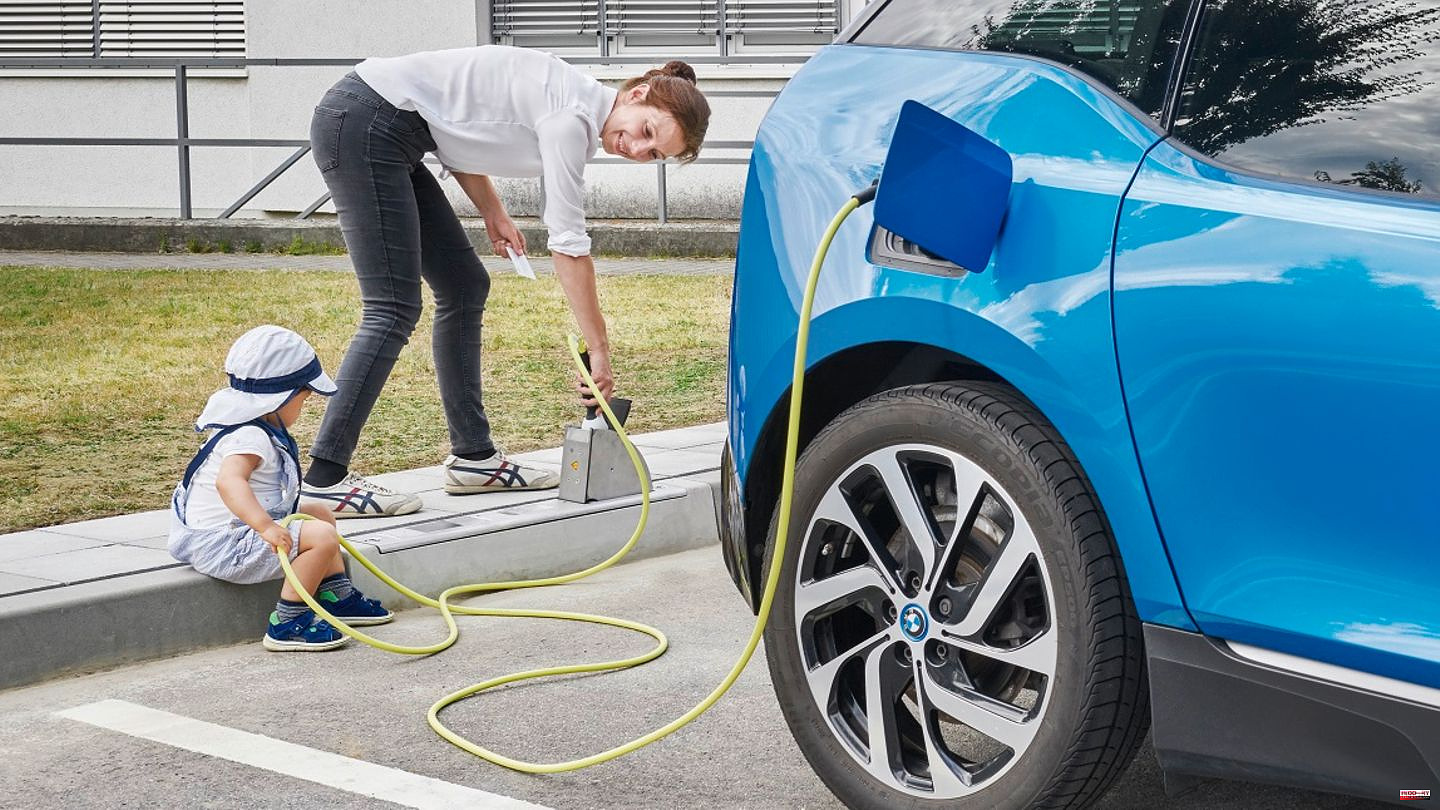Charging stations adorn the streets, especially in large cities. Some of the superstructures are very large and take up a good part of the adjacent sidewalk. The armaments group Rheinmetall wants to change that and presented a previously unknown concept at the VDE E-Mobility conference.
If the people of Düsseldorf have their way, they want to sink the charging points into the curb – and also make them look pretty. In concrete terms, this means that the entire technology should be moved into the sidewalk and should only be visible when necessary. The rest of the time, as the first concept pictures show, only light panels would be visible, which light up the path a bit.
With this concept, Rheinmetall wants to contribute to significantly increasing the number of available charging points in a minimally invasive manner, reducing the space requirement and beautifying the cityscape. It should also be easier for electric car drivers to connect the vehicle, since the distances for the cable should be shorter. Ideally, you should be able to place the connection for the electric car directly above the charging point.
Similar concepts for the integration of charging options in the existing infrastructure envisage the placement of connections in street lamps, but this results in disadvantages such as limitations on the maximum possible number of such stops.
According to Rheinmetall, the curb solution should enable charging with 22 kilowatts of alternating current and, thanks to the open protocol, can be integrated into existing charging structures. The star spoke to Rheinmetall about the loading curbs and confronted the company with criticism that had accumulated online shortly after the announcement of the new product.
One concern was the wait staff and contact with dirt that could inevitably collect on the sidewalk. The group replies: "Due to the possibility of one-handed operation (hand on the charging plug), the user does not come into contact with possibly dirty spots on the curb. Significant losses in comfort compared to conventional charging stations were found in extensive internal tests with pilot customers (also with back/knee problems, pregnancy, etc.). .) not determined, among other things, due to the one-handed operation. In order to be able to depict the real situation in the street space and to be able to generate further conclusions for the development, tests will be carried out in the future as part of a public pilot project."
As far as wheelchair users are concerned, there is also the all-clear. It says: "The swiveled loading curb is easily accessible for people with physical disabilities/wheelchair users - the insertion height can be compared to a Schuko socket."
Many also had concerns when looking at the position of the charging socket. Unlike a pillar, the technology is in the curb - so it initially looks as if water, for example, could penetrate more easily. Rheinmetall explains: "The system was developed for safe and reliable operation, even in heavy rain. The electronics for this are housed in an IP68-encapsulated unit. We are also working with a well-known charging socket manufacturer on a model that is approved for vertical installation."
It goes on to say: "During development, care was also taken to minimize dirt entry and at the same time maximize dirt tolerance. If both are not sufficient in certain situations/intervals, the system is easy to clean. After a four-month internal test phase, the 'problem' seems also far less critical than initially feared. Solutions for snow and/or ice are also available."
The question remains as to how Rheinmetall intends to integrate the usual technology, such as displays with information on the charging process or payment options with an EC or credit card. What is difficult to see in the pictures: the display is part of the curb. Rheinmetall also explains: "Card payment via a payment terminal comparable to a parking ticket machine is being considered. If possible, there should be a combination of payment by card or digitally, since the majority of users nowadays pay digitally anyway. Authentication is the same as with conventional charging stations."







